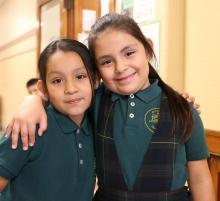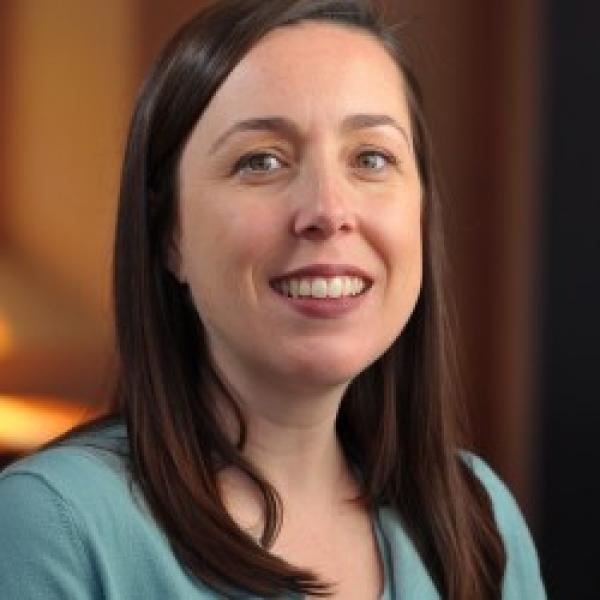From the Experts at ENL: Take a Vocabulary Field Trip
 The English as a New Language Program (ENL) equips educators to meet the unique needs of English Language Learners in Catholic schools. ENL has a threefold approach to helping Catholic schools ensure that their English language learners thrive. ENL helps schools and teachers develop a deep understanding of the process of language acquisition, employ research-based instructional strategies, and cultivate culturally sustaining classrooms.
The English as a New Language Program (ENL) equips educators to meet the unique needs of English Language Learners in Catholic schools. ENL has a threefold approach to helping Catholic schools ensure that their English language learners thrive. ENL helps schools and teachers develop a deep understanding of the process of language acquisition, employ research-based instructional strategies, and cultivate culturally sustaining classrooms.
Vocabulary is the building block of language and, for English learners (ELs), the instruction of vocabulary in our classrooms deserves special attention. Consider that a robust vocabulary improves reading comprehension and is essential for developing both a deep understanding of content and the ability to communicate this understanding (Genesee, Lindholm-Leary, Saunders, & Christian, 2006). Also, consider that ELs are working diligently to acquire and master both social language and academic language (Cummins, 2000). One of the most effective techniques teachers across the content areas can do for ELs is to explicitly and persistently teach vocabulary. Better yet, how can we work to make vocabulary meaningful and full of life?
We traveled to a local teacher's lounge to learn more . . .
Yesterday I (Clare) dove into data at our monthly faculty meeting with the K-2 team at my school. We reviewed a large assessment and realized that too many of our students were not yet showing grade-level proficiency in a category labeled "vocabulary." Comments started to emerge like, "The majority of my students didn't even know what a birdhouse was!" or "I asked for a show of hands, and I was surprised to see how many of them had never been to the zoo or a museum. I understand why the vocabulary scores are low!"
There's nothing quite like the conversations between teachers trying to make sense of what students don't yet know. They can be painful. They can be funny. They can be cathartic. If they reveal nothing else, they reveal that the work of a teacher is overwhelming and extraordinary.
Thankfully, our conversation quickly turned to business. How were we going to make a difference in a category as broad as vocabulary knowing we have tremendous linguistic diversity at our school? After a bit of hemming and hawing, we decided we would work to give our students a glimpse of the world outside our classrooms. We would take our students on what we called weekly vocabulary field trips or Lexicon Expeditions.
What is a Vocabulary Field Trip?
A vocabulary field trip is a quick slide show (we have been using Google Slides because it's very easy to import pictures from the web!). With our slides, it is effective and efficient to quickly bring 7-10 vocabulary words to life using images and real-world contexts. For example, we "went on a field trip"based on the word "sizzle" in which we visited Memphis via a picture of bacon sizzling in a cast iron pan. For the word "birdhouse," we visited a backyard in Michigan. Even if we weren't certain of the origins of the photos, we selected, we created a story for each image to give it an authentic context.

How Do We Choose the Words?
We knew we needed to help our students gain ground, so we decided to go on our vocabulary field trips using words over and above our spelling words or the words bolded in our texts. With millions of English words to choose from, we needed a framework. So, we anchored ourselves in Marzano's lists of academic vocabulary and the vocabulary our students encountered in our classroom via stories, experiences, and current events. We agreed there were no "right" and "wrong" lists as long as the words we chose stretched their vocabularies and were relevant to the children.
How Often To Take the Field Trip?
Understanding the importance of repeated exposure to new vocabulary, we committed ourselves to taking the same field trip every day for a week. The first field trip might be a little longer because we'd focus on input, taking time to explain each word in context, and repeating the word multiple times so students could learn to read and pronounce it. But, the following days we would invite students to use the words via their own sentences, focus on the prefixes/root words/suffixes, practice spelling and writing the words, add gestures where applicable, and identify synonyms and antonyms.
Why have the Field Trips been working?
We have found great success in building vocabulary in this tangible way. We believe deeply in providing students with a language-rich environment and helping them to experience language through these linguistic expeditions. When it comes to learning new vocabulary, especially with English learners, research tells us that simple, one-time exposure is not enough for language to "stick." For more effective vocabulary expansion, we are focusing upon depth of knowledge and experience with lexicon—pronunciation, cognates, spelling, language patterns, parts of speech, meaning, images, synonyms, and sentence use. We are happy to have moved beyond a reading and memorizing of the bolded words. Onward and upward!
How to Expand the Field Trips
It should be interesting to see how each of our teachers continues to run with this idea. I expect some will create word walls. Others will put up a giant sticky note and invite students to write the word on the note every time they encounter it in conversation or in texts. Some might create a gesture associated with each word or reward children for using them accurately in context.
The truth is, we're just getting started. But, there will be no lollygagging for us. We've decided to respond to the vocabulary gap with panache. Lexicon expeditions, here we come!
Happy Reading,
Clare, Katy, and Jenny
Check out more resources and best practices for teaching ELs with English as a New Language's monthly 2-Minute Tips!
